
How Agile teams use Lucid to enhance alignment, transparency, and connection
Reading time: about 12 min
Topics:
For Agile teams that are looking for an end-to-end solution to boost alignment and efficiency, Lucid can help. Whether you need a way to map dependencies or a central place to streamline documentation, Lucid has everything teams need for improving how they work together. Now Lucid has even more enhanced capabilities that were designed specifically to transform how Agile teams collaborate.
Read on to learn the top ways that Agile teams use Lucid, from facilitating program-level events such as big room planning to making more informed decisions about team capacity, ultimately increasing their communication and agility.
Centralizing and standardizing Agile documentation
Transparency and collaboration are important aspects for Agile teams as they aim to continuously improve and deliver high value for customers. Agile teams need a central place to streamline documentation and bring everyone together so people can access what they need, stay updated on work progress or plans, and quickly get started.
Agile teams use Lucid as a single source of truth to ensure alignment and encourage engagement across their entire organization. With Lucid, teams can easily share documentation with each other and stakeholders to strengthen transparency. By collaborating visually, teams create documentation naturally and are better able to identify areas for improvement. Here’s how Lucid helps Agile teams streamline their documentation.
Creating team hubs
It’s easy for Agile teams to come together in Lucid. Thanks to team hubs, Agile development templates, and intelligent diagramming capabilities, there’s one central place to house documentation. Your Agile team can easily find all the resources they need, including instant access to technical diagrams such as architecture diagrams, user journey maps, product roadmaps, and more.
In a team hub, people can easily collaborate, stay organized, discuss work, and make decisions together. You can even pin a team space within your team hub to serve as a home base for coordination.
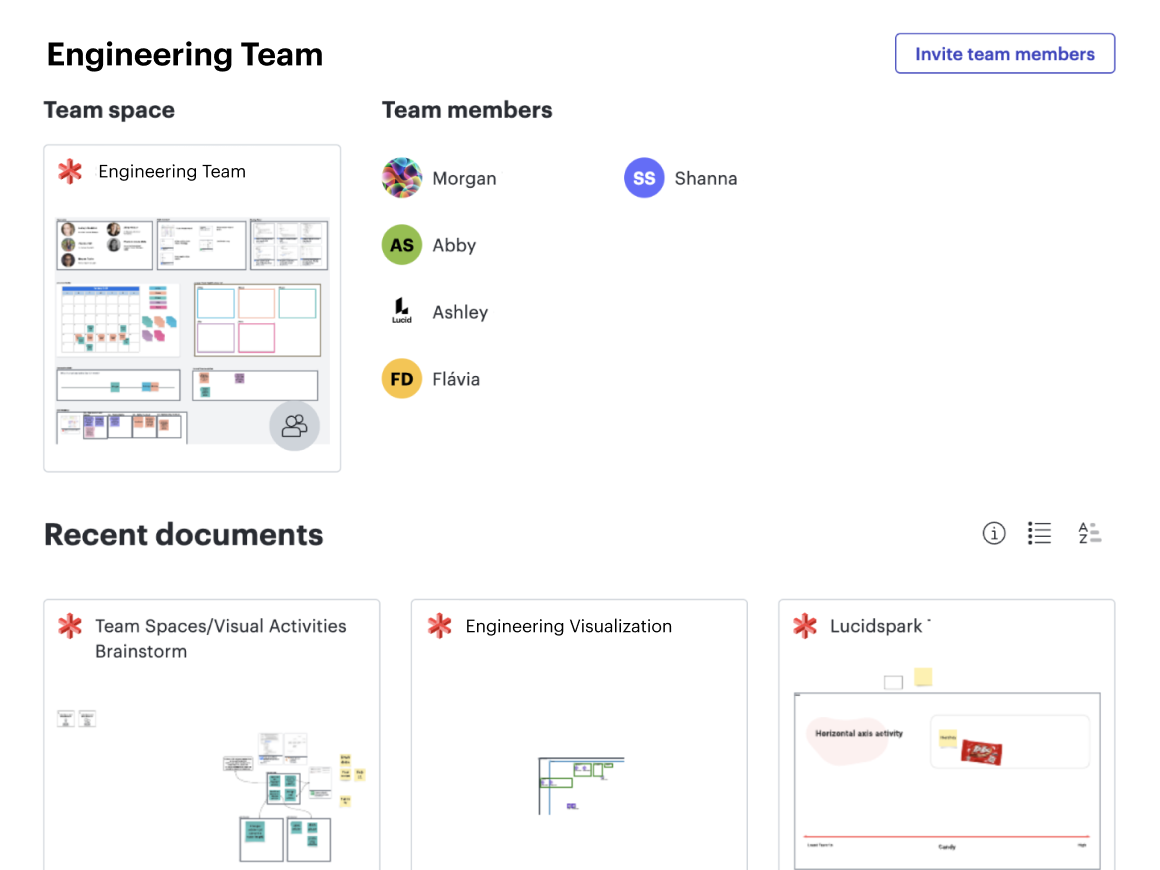
Sharing proven ways of working
With Lucid’s Agility Accelerator, designated Agile managers are able to create blueprints, which are sets of templates for their teams that provide a starting point for Agile events or other Agile work. These blueprints can be changed and customized to meet the team’s needs as they make discoveries and improvements throughout their work.
On top of creating blueprints, Agile managers are also able to create team hubs at scale so that every team has a home base for their documentation. Once a team is created in the Agility Accelerator, it automatically is given a team hub. From there, managers can create team tags for organization and easy sharing, grouping teams by initiative or project to share blueprints between teams. With these features, Agile managers are able to quickly introduce team members to proven ways of working and get them started.
Facilitating program-level planning
Agile events such as big room planning (also known as PI planning) are crucial for businesses to align on cross-functional work and the overall vision for their product. Lucid helps teams facilitate these events by providing structure, making it easier to communicate across teams, and enhancing productivity.
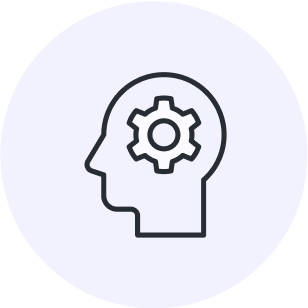
Get the complete toolkit for big room planning
Check out our guide on big room planning, which includes all the templates you need to facilitate a program-level event.
Get the guideSince Lucid provides a virtual planning space, using Lucid to conduct PI planning provides increased visibility and accessibility for a large group of people regardless of location. You can centralize your documentation in a single space that everyone can view, including stakeholders. In fact, one company that uses Lucid saved over $1 million a year on travel costs while boosting participation for their planning sessions. Here’s how Lucid helps Agile teams with program-level planning.
Confidence voting
Big room planning requires a lot of strategic decision-making. When Agile teams need to align on upcoming work that’s to be completed, they use Lucid to build consensus. In Lucid, you’ll find a variety of templates to guide you through consensus-building techniques, including fist to five and confidence voting, which are popular methods to achieve consensus among big groups. Not only can you use Lucid to facilitate consensus, but the platform also records your decisions, so you have a record to look back on to inform your decisions.
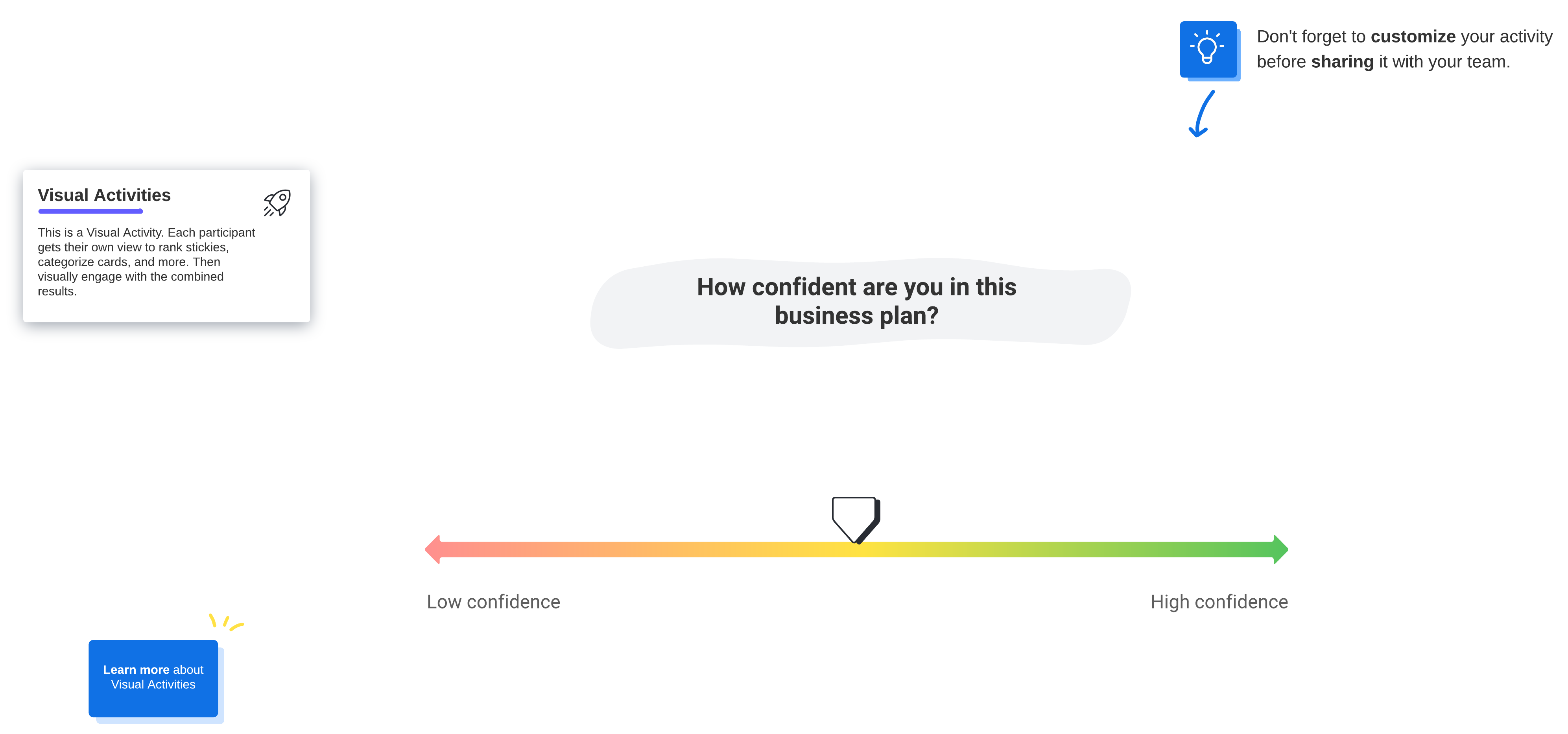
Small group work
Another challenge to program-level planning is how many people are involved. It’s easy for a few dominant voices to drown out the rest and for some participants to hesitate about speaking up in front of everyone. Luckily, Lucid has breakout boards, a feature that breaks larger groups up into smaller ones to facilitate group discussions. People may feel more at ease in breakout groups, and it’s also a great way to hold attention as you break a long meeting up into shorter, smaller ones for participants.
Conducting dependency mapping
Dependency mapping, the activity of creating dependency maps, is a key practice for Agile teams. By visualizing the relationships between elements within a workflow, teams can identify potential dependencies ahead of time, making it easier to eliminate or mitigate these dependencies—ultimately boosting efficiency.
Agile teams use Lucid to visualize their workflow and map out dependency data in real time. Thanks to Lucid’s automatic bi-directional syncing with Jira and AzureDevOps (ADO), any change you make in your existing system of record is reflected in Lucid, so you don’t have to worry about manually updating data. By using Lucid, Agile teams can see the areas where they need to take action and improve cross-functional collaboration.
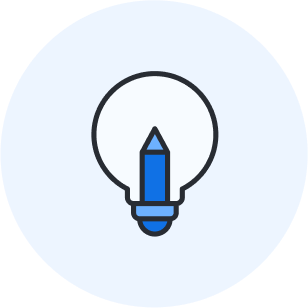
Learn more about using Lucid for dependency mapping
Learn how you can use Lucid to manage dependencies in your workflow and boost your team’s agility.
Read moreLucid’s Agility Accelerator provides the capability for data-driven scenario planning, in which teams can pause the two-way syncing with Jira and ADO and plan out a scenario to agree on the best potential path forward. This capability allows teams to explore multiple “what-if” scenarios and factor in how changes to staffing, scope, and timelines may impact plans for a given workflow.
With Lucid, you can fully play out a scenario without impacting any data in your system of record, then turn the syncing back on when you’re ready to move forward with your decision. Easily add a team’s capacity to a Dynamic Table to see how changes in scope or assignments impact a potential scenario.
Structuring Scrum teams
63% of Agile practitioners use the Scrum framework to form their teams and complete work in sprints. Not only do Scrum teams use Lucid to facilitate events like sprint planning, but they also use Lucid to visualize and structure their teams.
Since program-level planning is all about deciding what work needs to be done, one of the next steps is determining who will complete the work. With Lucid, teams can automatically generate an org chart from a CSV file, instantly visualizing their reporting structure. Then, they can create a group view to be able to see each Scrum team and add or move employees between groups.
This makes it easy to determine who’s the right Scrum master for each team and ensure each team has the needed skillset to deliver their assigned work. In Lucid, you can even apply conditional formatting to deepen insight and visually distinguish roles so you can see the difference between engineers and product managers, for example, in a single glance.
Whether you’re working on new initiatives or new engineers are joining the team, using Lucid’s group view in your org charts quickly provides the information you need to make informed decisions. Thanks to Lucid’s data-linking capabilities, data is automatically kept up to date so you can use your org chart as a single source of truth for multiple teams. You’re free to focus on quickly shifting your team structure to accomplish critical work for your business.
Facilitating team-level events
On top of visualizing team structure, Lucid provides facilitation capacities for team events such as sprint planning, daily standups, sprint reviews, and sprint retrospectives—helping Agile teams from end to end. Whether you’re preparing your team for an upcoming sprint or reviewing how the last one went, Lucid has everything you need to host a meeting, record ideas, and determine action items for next steps.
By using Lucid, you’ll have access to a historical record of your Agile events and the decisions that were made so you can track continuous improvement. Having everything in one place fosters team cohesion and communication. Lucid also makes it easier to practice collaboration equity, thanks to features that support psychological safety and ensure that each team member has an equal opportunity to contribute during an event.

Get the toolkit for Agile meetings
Whether your Agile team’s completely remote or hybrid, get everything you need for successful Agile meetings.
Learn moreUsing unique templates for engaging meetings
Lucid’s templates aren’t your typical templates—they were designed with input from experienced Agile coaches to facilitate a seamless experience for each event. In Lucid’s Agile templates, you’ll find quick tools right where you need them on the canvas so you can start a timer, import Jira issues, use a laser pointer, and more. These features make meetings more engaging and productive for everyone.
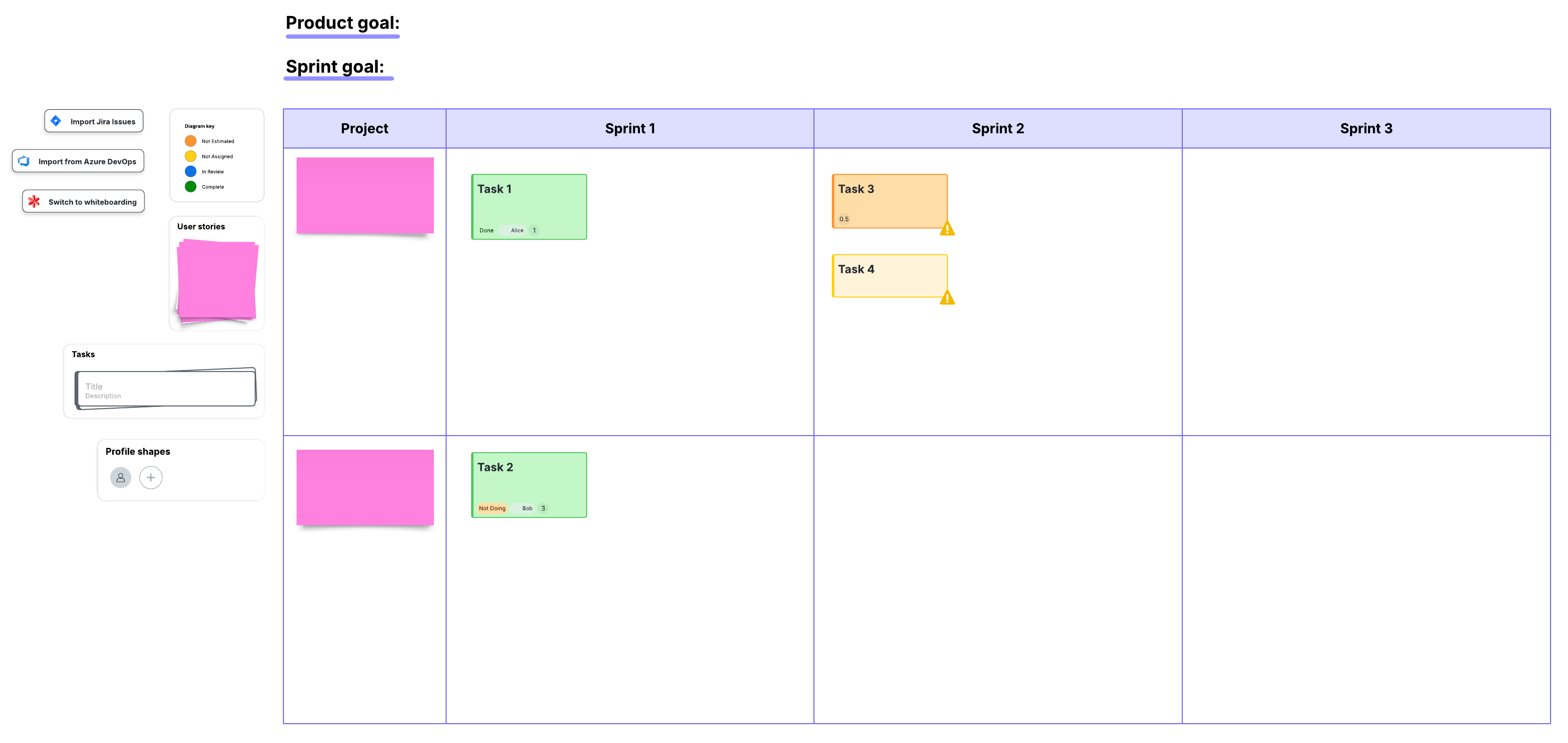
Thanks to the blueprints feature in Lucid’s Agility Accelerator, Lucid uniquely provides the ability for managers to share an entire set of templates with their teams, providing a great starting point for facilitating team-level events like sprint planning. Teams can access blueprints alongside other documents in their team hubs, making it easier for instant collaboration.
Conducting retrospectives
Sprint retrospectives provide an opportunity for learning as teams reflect on what went well during a sprint and what could be improved. Retrospectives foster a culture of continuous improvement, especially when everyone feels comfortable sharing their thoughts. Many Agile teams use Lucid’s sprint retrospective templates to guide these discussions, whether it’s an in-depth retrospective or a quick one.
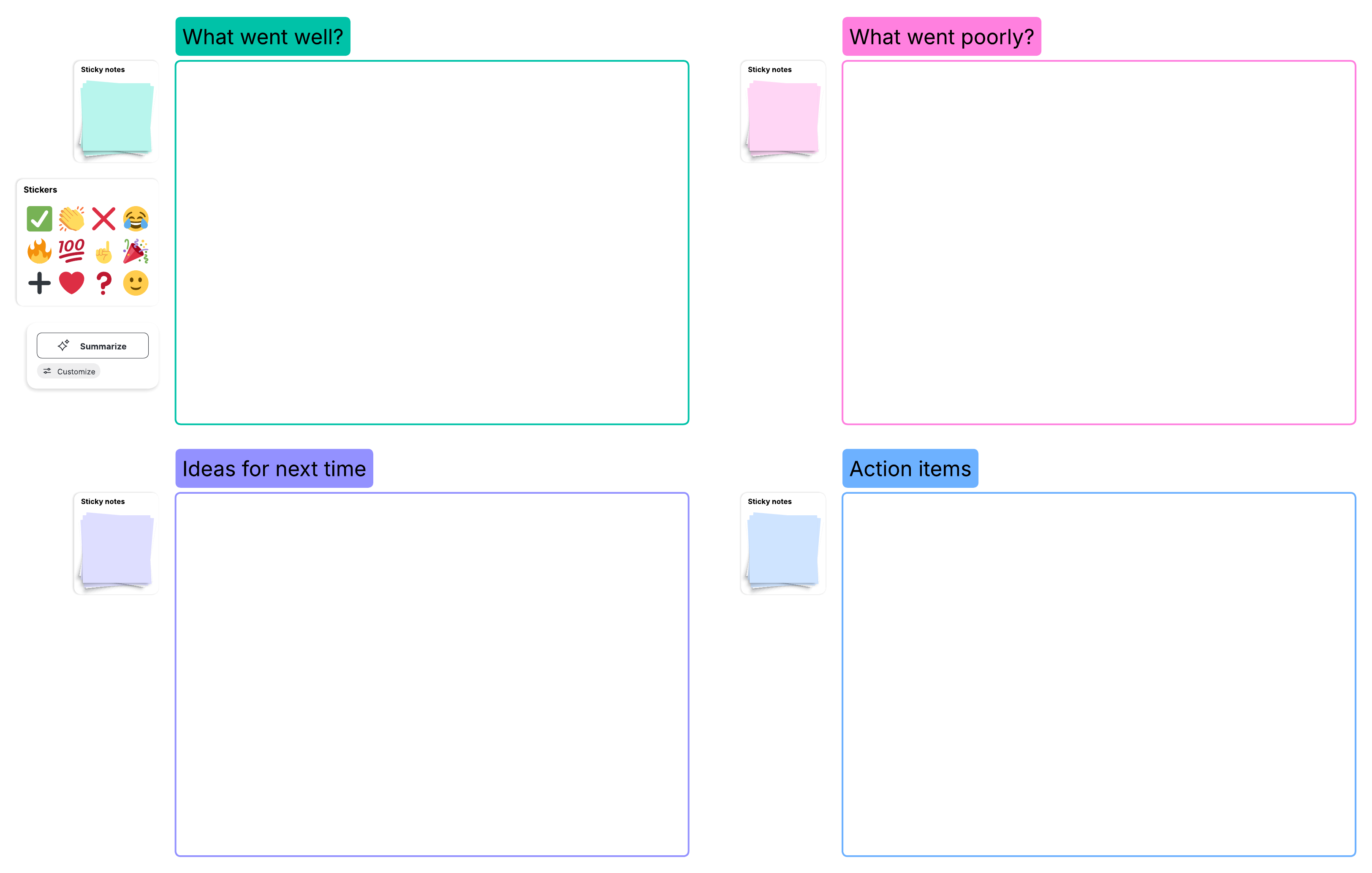
In Lucid, you can use private mode, which allows participants to contribute sticky notes without their names attached, encouraging honest feedback. Private mode is one of the features Lucid offers to support psychological safety, helping teams cultivate a work environment where people feel free to speak their minds or ask questions without fear of repercussion.
Maintaining product backlogs
Another key practice for Agile teams is backlog development and refinement. A product backlog is a core component of many Agile frameworks and is an ordered list of what teams will accomplish in order to deliver value to customers. By using Lucid, Agile teams are able to use a product backlog template to quickly create a backlog. From there, they can prioritize tasks, practice estimation techniques, and more.
Prioritizing work items
Agile teams use Lucid to refine their product backlogs and prioritize which work items will be completed next. If, for example, you’re conducting sprint planning and your team is able to take on an additional task, you can use Lucid to facilitate your prioritization discussion. A Visual Activity such as the impact vs. effort matrix activity helps your team collectively identify what that additional task should be from your backlog. Each team member can rank tasks by the impact the task will make versus how much effort it’ll take to complete.
In the end, you can view your team’s rankings and use the visual to guide your discussion, ultimately reaching a consensus on which task to prioritize next.
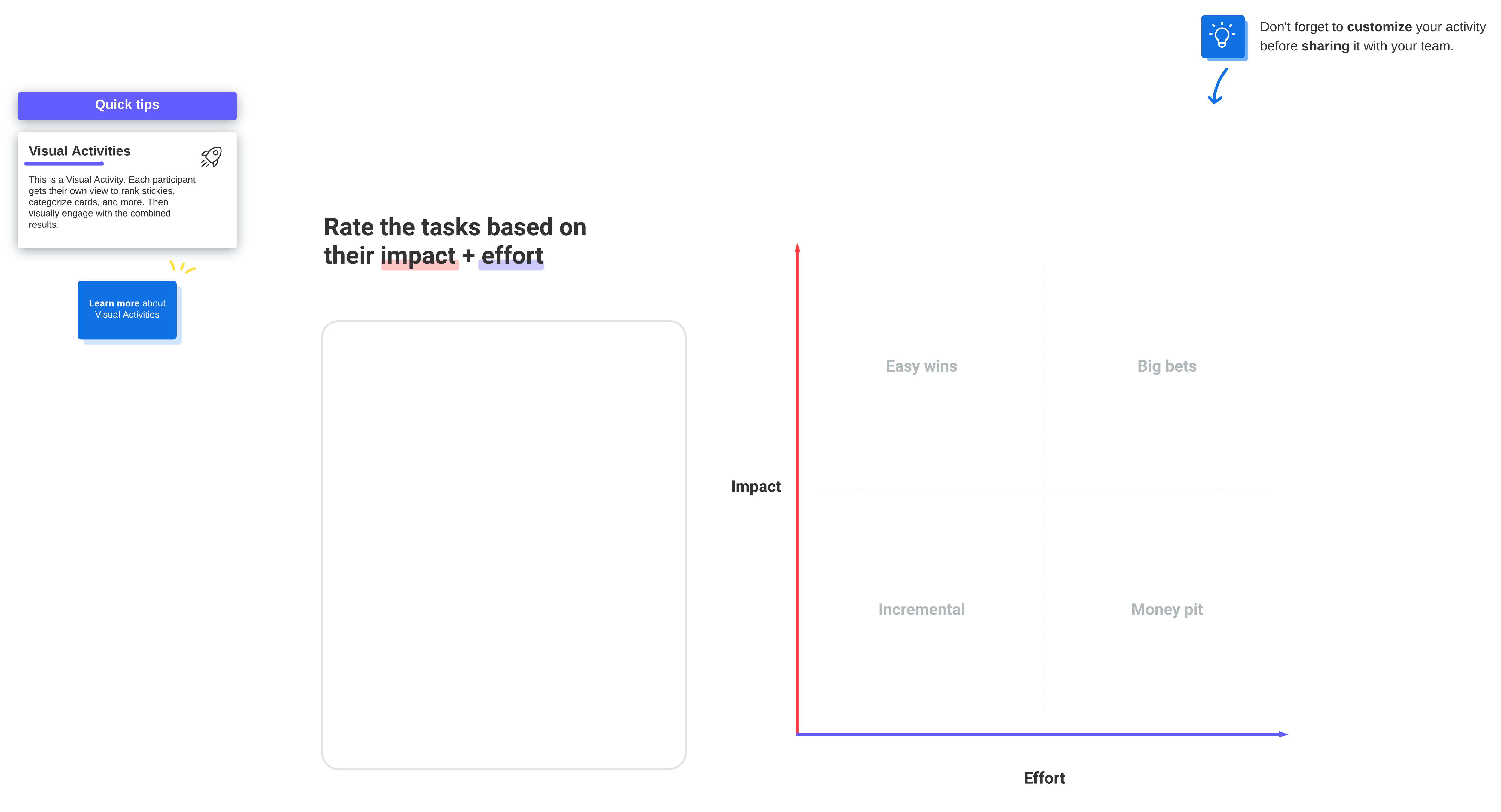
Visualizing team capacity
Part of the Agile mindset is reducing burnout and ensuring that teams are able to work at a sustainable pace. An essential aspect of maintaining a product backlog is making sure that team members aren’t working over capacity.
With Lucid, Agile teams can use features like conditional formatting and Dynamic Tables to visualize the capacity of team members and be able to quickly see who on the team can take more work—and who’s at risk of being overloaded. This data informs whether team members are assigned more work items from the product backlog and the size of those items.
Capacity planning in Lucid’s Agility Accelerator also helps teams identify where they’re overloaded and why. This enhanced planning feature makes it easier for teams to communicate about overcapacity to leaders and discuss how work needs to shift in order to still accomplish the goal.
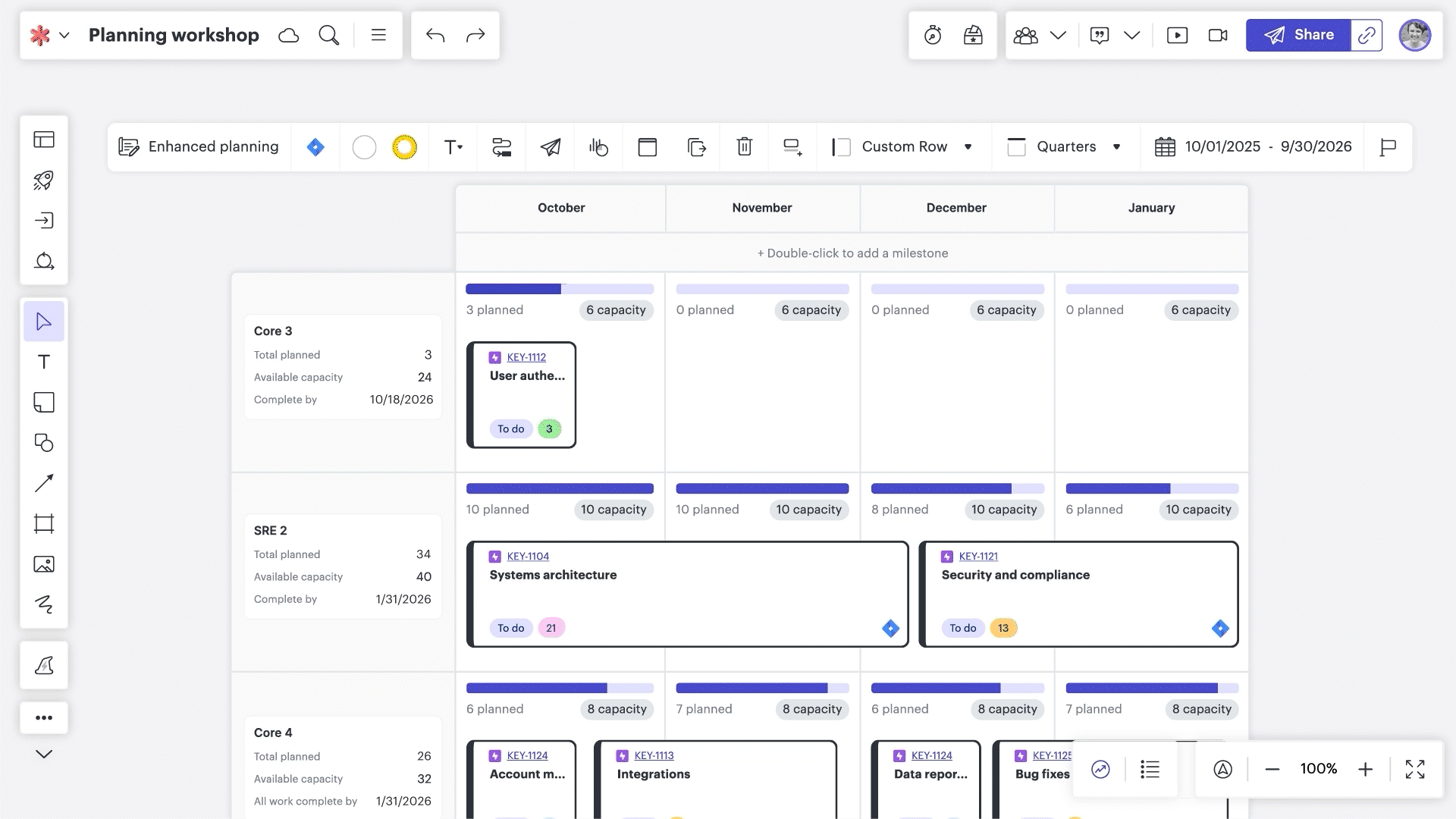
Estimation templates and features
To further aid in product backlog refinement, Agile teams use Lucid’s team estimation capability and estimation templates. By using units such as T-shirt sizes and story points, teams can collectively estimate the level of effort associated with tasks, taking into account factors such as complexity, risk, and uncertainty.
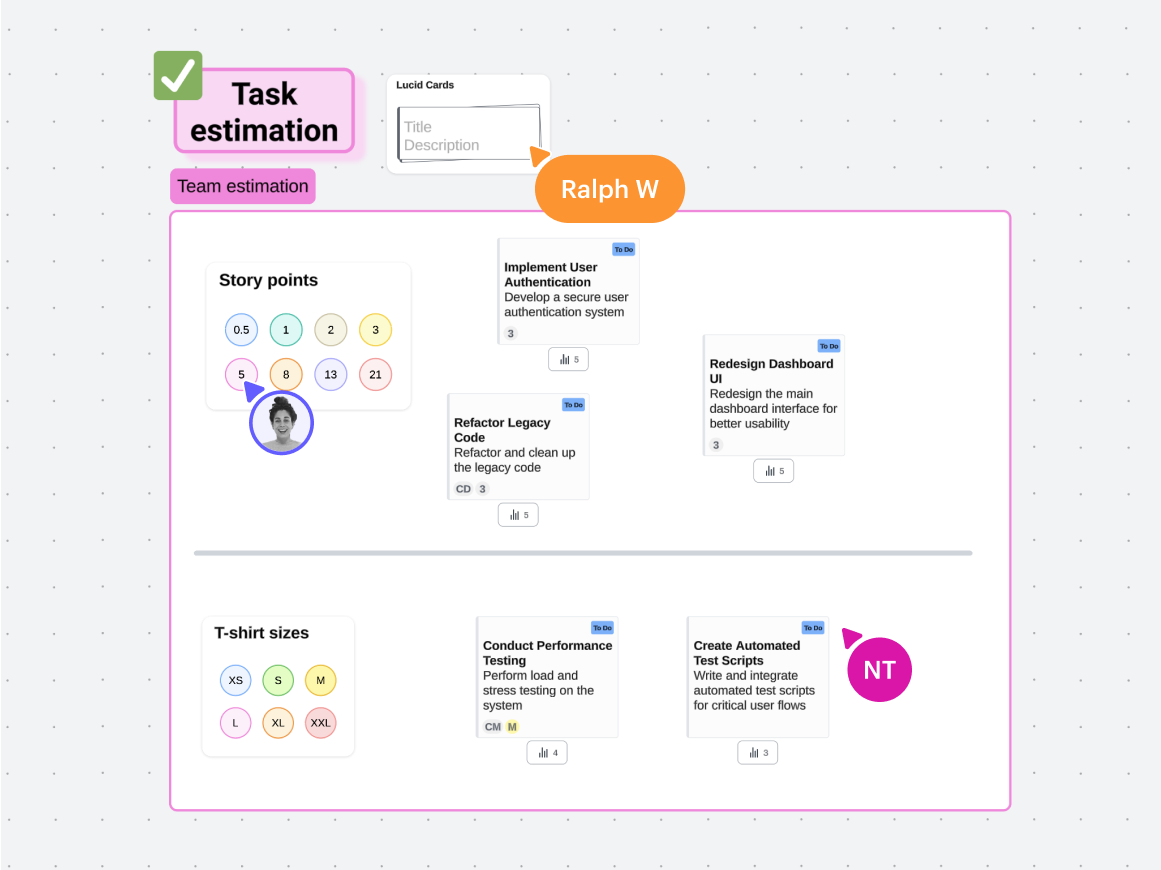
With Lucid, Agile teams can practice estimation techniques, using templates like the affinity estimation template to estimate the size and complexity of items in a product backlog. Estimation fosters discussion and further enhances alignment between team members.
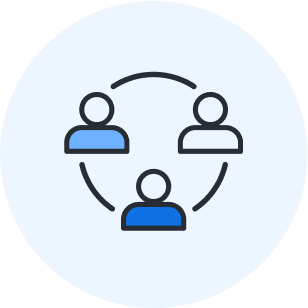
A guide to Agile estimation techniques
Learn more about the top Agile estimation techniques you can use to enhance alignment on your team.
Read nowTracking work in progress
Beyond planning how work will be done, Lucid helps Agile teams track work that’s in progress. In Lucid, teams can visualize the status of projects with reporting shapes such as:
-
A workload tracker, which is useful for teams that assign story point values to work tasks.
-
A progress bar that shows a visual of what’s in progress versus done.
-
An ownership chart so you can see a breakdown of who’s working on what.
-
Customizable reporting shapes to fit your team’s needs.
Visualizing progress not only provides valuable insight but also helps teams plan workload more efficiently and ensure that team members aren’t overloaded.
Tracking qualitative data
Alongside tracking quantitative data, Agile teams need to have an understanding of qualitative factors such as team confidence, sentiment, and risk. Capturing these insights can be challenging without a structured way to record and assess qualitative data, but missing this data can lead to potential delivery risks or team burnout.
With Lucid’s Agility Accelerator, teams can complete Visual Activities within Frames that are clearly marked within blueprints to create an insights page. These qualitative insights can then be shared with leaders to gain a clear view of confidence levels, sentiment, blockers, and risks. This capability ensures that there’s visibility into team performance and concerns while reducing the burden on teams to provide repetitive updates, so they can remain focused on their work.
Use Lucid to enhance alignment and increase transparency for your Agile team
Agile teams need a way to visualize their workflows, manage team capacity, facilitate Agile events, and easily communicate with stakeholders. Lucid helps Agile teams with all these needs and more by providing resources, templates, and enhanced features all within one platform. As companies aim to deliver value and continuously improve, Lucid is the end-to-end solution for teams to work efficiently.
Curious about the difference Lucid can make for your Agile team? Request a demo today and see for yourself how Lucid boosts agility and collaboration across teams.

Try using Lucid for your Agile team
Get in touch to see how Lucid can help you achieve better business results.
Try it nowAbout Lucid
Lucid Software is the leader in visual collaboration and work acceleration, helping teams see and build the future by turning ideas into reality. Its products include the Lucid Visual Collaboration Suite (Lucidchart and Lucidspark) and airfocus. The Lucid Visual Collaboration Suite, combined with powerful accelerators for business agility, cloud, and process transformation, empowers organizations to streamline work, foster alignment, and drive business transformation at scale. airfocus, an AI-powered product management and roadmapping platform, extends these capabilities by helping teams prioritize work, define product strategy, and align execution with business goals. The most used work acceleration platform by the Fortune 500, Lucid's solutions are trusted by more than 100 million users across enterprises worldwide, including Google, GE, and NBC Universal. Lucid partners with leaders such as Google, Atlassian, and Microsoft, and has received numerous awards for its products, growth, and workplace culture.
Related articles
How visual collaboration supports Agile teams
From increasing transparency to simplifying documentation, learn why Agile teams today rely on visual collaboration.
Big room planning guide (+ an Agile template toolkit)
Struggling with big room planning? Lucid has the definitive guide, including a step-by-step walkthrough and template toolkit.
How Lucid supports the SAFe framework
Learn the ways that your company can use Lucid to implement the SAFe framework.
What is capacity planning? A step-by-step breakdown + best practices
Learn how to do capacity planning effectively with your team.
